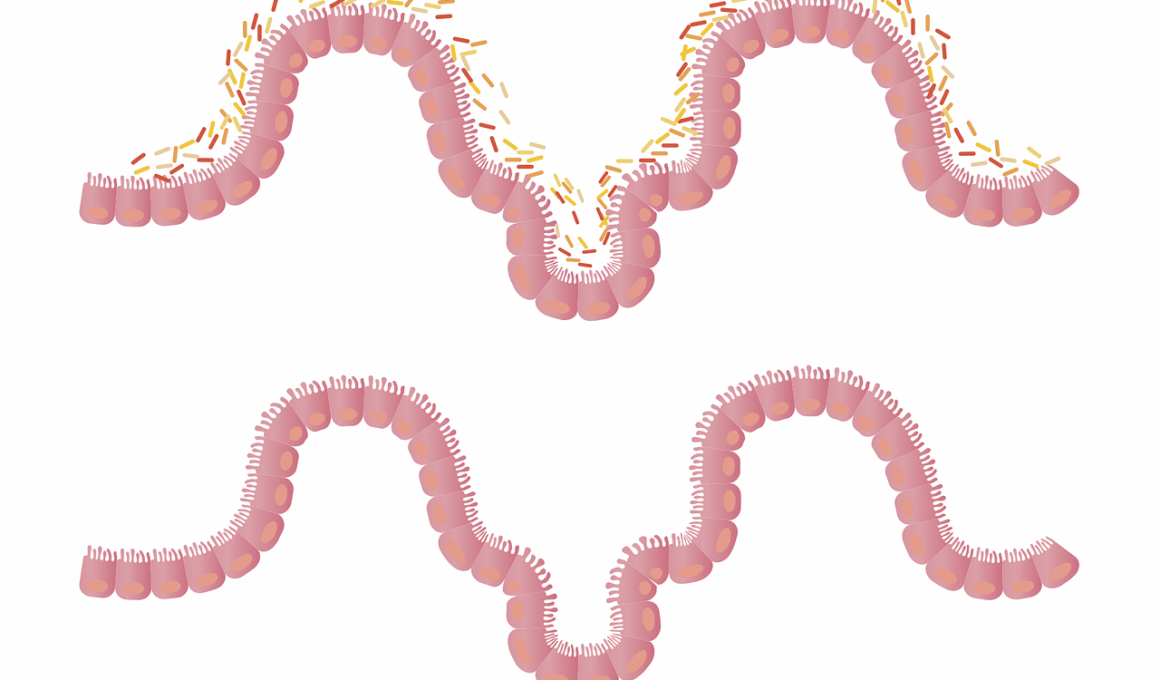The Connection Between Gut Health and Dance Fitness Performance
For dancers, maintaining optimal performance is key, and this extends beyond just rigorous training and practice. Central to this is gut health, which plays a considerable role in overall well-being and athletic performance. A healthy gut enables better digestion, improved nutrient absorption, and greater production of energy, all crucial for sustaining high-energy dance routines. Gut health is often linked to the balance of beneficial bacteria in the intestines, influencing how the body processes food and extracts nutrients. A dancer struggling with gut issues may face fatigue, reduced stamina, and diminished concentration, all of which can negatively impact performance. Therefore, it’s essential for dancers to be aware of their dietary habits and make informed choices that support gut health. This means focusing on a balanced diet that includes whole foods, fibers, and fermented products to foster a healthy gut microbiome. Keeping well-hydrated is also necessary, as water helps in digestion. Consequently, a dancer who prioritizes gut health can experience enhanced energy levels and performance effectiveness, improving their dance practice and competitions.
Symptoms of Poor Gut Health
Dancers often overlook the symptoms of poor gut health, mistakenly attributing fatigue to long hours of practice or the intensity of dance routines. Common signs include bloating, gas, irregular bowel movements, and fluctuating energy levels. If they experience frequent digestive distress, these dancers may find it increasingly challenging to perform at their best. Additionally, poor gut health can lead to nutrient deficiencies that directly impact muscle repair and overall stamina. This often culminates in slower recovery times post-rehearsal or performance. Moreover, mood swings and anxiety, which are linked to gut dysfunction, can further hinder a dancer’s ability to focus. Dancers must pay attention to their bodies and recognize these indicators early to prevent long-term adverse effects on their dance performances. Taking measures to restore gut health—such as integrating probiotics into their diets or reducing processed foods—can significantly improve their emotional and physical state. By addressing these symptoms promptly, dancers can regain their peak performance levels and enjoy their craft more fully, making improvements in their overall dance journey.
Nutrition plays a pivotal role in dance fitness performance, and optimizing it is integral to any dancer’s regimen. Including foods rich in probiotics supports gut health, enhancing the microbiome’s diversity, which can lead to better health overall. Yogurt, kefir, sauerkraut, and kombucha are excellent sources of probiotics. These foods contribute to maintaining a balanced gut environment that empowers dancers by improving digestion and boosting immunity. It’s also crucial to incorporate prebiotic foods—like garlic, onions, leeks, and asparagus—into their meals. Prebiotics serve as food for the beneficial bacteria in the gut, promoting their growth and activity. Consuming plenty of fruits, vegetables, whole grains, and lean proteins provides the essential nutrients necessary to keep a dancer’s body functioning optimally. Furthermore, managing portion sizes and eating intuitively can help maintain energy levels without causing discomfort. A consistent focus on these nutritional aspects ensures that dancers maintain their energy reserves for practice and performance, making dietary choices crucial for achieving long-term success in dance fitness. Investing in sound nutrition ultimately fosters a thriving dance career, linking healthy choices directly to enhanced performance.
The Role of Hydration in Gut Health
Hydration is often underestimated in its role during dance fitness training, yet it is essential for preserving gut health. Adequate water intake aids digestion by helping break down food and facilitating nutrient absorption in the intestines. Dancers need to ensure their hydration levels are optimized, allowing their bodies to perform efficiently. Dehydration can result in slower digestion and increased chances of bloating, which can negatively affect a dancer’s stamina and comfort during rehearsals or performances. Water also helps in flushing out toxins and waste from the body, supporting a healthy gut environment. Dancers should aim to consume enough fluids not just during classes but throughout the entire day. Electrolyte beverages can be beneficial, especially after intense dance sessions, to restore the minerals lost through sweat. Additionally, herbal teas and foods with high water content—like cucumbers and watermelon—can be practical ways to maintain hydration. By prioritizing both hydration and gut health, dancers can ensure they maximize their energy and performance capabilities, allowing them to focus solely on their craft during practice and live events.
Emotional health plays an indirect yet significant role in gut health, affecting how dancers perform and engage with their art. Stress and anxiety release hormones that can exacerbate gut issues and impede proper functioning, leading to discomfort and digestive resistance. Dancers often experience performance anxiety, which can further disrupt their gut health. Mindfulness practices, such as yoga and meditation, can be useful tools for addressing these emotional challenges. Engaging in these practices helps in reducing stress levels, enhancing mental clarity and focus. Implementing regular recovery time into a dancer’s routine can also mitigate emotional turmoil, ultimately benefiting gut health by providing the body with necessary downtime. Balanced meals, coupled with emotional well-being, creates a strong foundation for peak performance in dance. Additionally, developing supportive relationships within the dance community can enhance emotional health, indirectly benefiting the gut through positive psycho-emotional feedback. Emphasizing the connection between mental health and gut well-being fosters a holistic approach to dance fitness, reminding dancers to balance training and self-care. In this way, dancers can create an environment conducive to thriving both on the dance floor and in everyday life.
Incorporating Supplements for Gut Health
In some cases, dietary changes alone may not suffice to optimize gut health for dancers. Incorporating supplements can be valuable, particularly probiotics and digestive enzymes. Probiotics help replenish healthy gut bacteria and are available in various forms, including capsules, powders, and even gummies. Digestive enzymes support efficient food breakdown, alleviating symptoms of discomfort that may hinder performance. Before choosing any supplements, dancers should consult with a healthcare provider or a nutritionist to ensure they select appropriate products. Each dancer’s needs vary, depending on their diet, lifestyle, and activity levels, making professional advice crucial. Additionally, maintaining realistic expectations is important; supplements should complement a well-planned diet rather than replace it. Staying informed about the latest research on gut health supplements can empower dancers to make educated choices and optimize their routines. A diligent approach to supplementation, along with consistent dietary efforts, enhances overall well-being in dancers. This commitment can directly influence performance levels and recovery times, allowing for a more enriched and fulfilling dance experience. Ultimately, supporting gut health through smart supplements can lead to a happier, healthier dancer.
Understanding the intricate connection between gut health and dance performance is fundamental for every dancer seeking to elevate their craft. Those dedicated to honing their skills need to prioritize nutrition, hydration, and hence gut well-being. Positive changes will manifest not just in how they feel but also in their stage presence and stamina during performances. As dancers continually strive for excellence, aligning their lifestyle choices with optimal gut health should be a goal. Knowing factors such as environment, diet, and emotional health can enrich the dancing experience and improve physical capabilities. By proactively managing these components, dancers can unlock their full potential and maintain consistent high performance. Ultimately, the overlap between gut health and dance fitness performance serves as a reminder of the power of holistic health in achieving goals. Dancers should aim for comprehensive health strategies that encompass both physical and mental aspects to fully embrace their dancing journeys. When dancers commit to this understanding, they not only improve their own performances but also inspire others to recognize the significance of health as it relates to their art.


